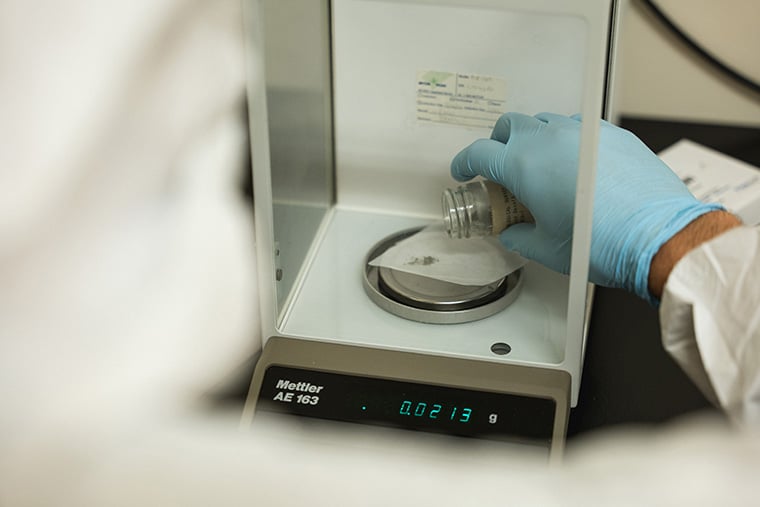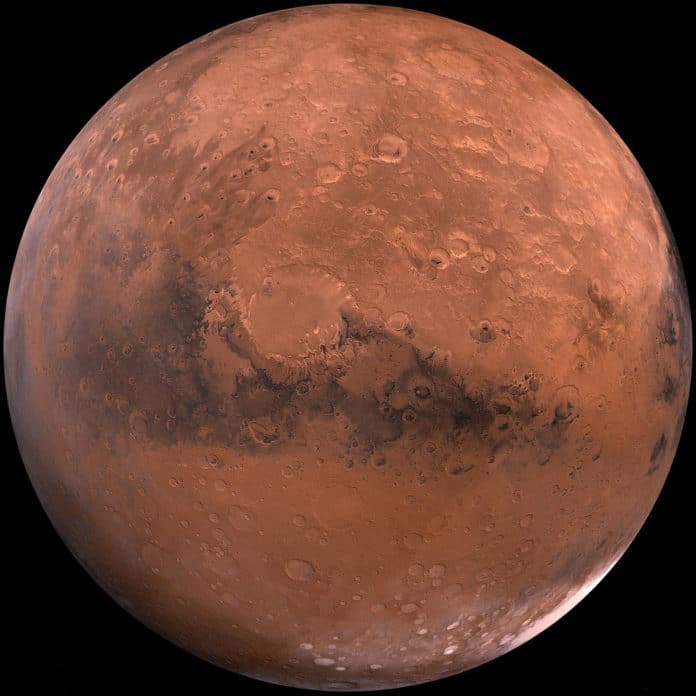Mars has no liquid water on its surface today. The reason may be its small size, suggests a new study by from Washington University in St. Louis.
Several studies and analyses on Martian meteorites suggest that Mars was once enriched with Water. What’s more, NASA’s Viking orbiter spacecraft and the Curiosity and Perseverance rovers on the ground — returned dramatic images of Martian landscapes marked by river valleys and flood channels.
Despite this evidence, no liquid water was found on the Mar’s surface. The reason remains unclear until now. But, this new study suggests a more fundamental reason why today’s Mars looks so drastically different from the Earth.
Kun Wang, assistant professor of Earth and planetary sciences in Arts & Sciences and senior author of the study, said, “Mars’ fate was decided from the beginning. There is likely a threshold on the size requirements of rocky planets to retain enough Water to enable habitability and plate tectonics, with a mass exceeding that of Mars.”
Using stable isotopes of potassium (K), the research team estimated volatile elements’ presence, distribution, and abundance on different planetary bodies.
Scientists chose potassium because it is a moderately volatile element, yet scientists used it as a tracer for more volatile elements and compounds, such as Water.
Unlike previous attempts that used potassium-to-thorium (Th) ratios gathered by remote sensing and chemical analysis, this new method is entirely new to determine the amount of volatiles Mars once had.
The team measured the potassium isotope compositions of 20 previously confirmed Martian meteorites. Using the approach, they found that Mars lost more potassium and other volatiles than Earth during its formation but retained more of these volatiles than the moon and asteroid 4-Vesta — two much smaller and drier bodies than Earth and Mars.

Katharina Lodders, research professor of Earth and planetary sciences and co-author of the study, said, “The reason for far lower abundances of volatile elements and their compounds in differentiated planets than in primitive undifferentiated meteorites has been a longstanding question. The finding of the correlation of K isotopic compositions with planet gravity is a novel discovery with important quantitative implications for when and how the differentiated planets received and lost their volatiles.”
“Martian meteorites are the only samples available to us to study the chemical makeup of the bulk Mars. Those Martian meteorites have ages varying from several hundred million to 4 billion years and recorded Mars’ volatile evolution history. Through measuring the isotopes of moderately volatile elements, such as potassium, we can infer the degree of volatile depletion of bulk planets and make comparisons between different solar system bodies.”
Kun Wang, assistant professor of Earth and planetary sciences in Arts & Sciences and senior author of the study, said, “It’s indisputable that there used to be liquid Water on the surface of Mars, but how much water in total Mars once had is hard to quantify through remote sensing and rover studies alone. There are many models out there for the bulk water content of Mars. In some of them, early Mars was even wetter than the Earth. We don’t believe that was the case.”
Klaus Mezger of the Center for Space and Habitability at the University of Bern, Switzerland, a co-author of the study, said, “This study emphasizes that there is a very limited size range for planets to have just enough but not too much Water to develop a habitable surface environment. These results will guide astronomers in their search for habitable exoplanets in other solar systems.”
Journal Reference:
- Zhen Tian, Tomáš Magna et al. Potassium isotope composition of Mars reveals a mechanism of planetary volatile retention. Proceedings of the National Academy of Sciences, 2021; DOI: 10.1073/pnas.2101155118
